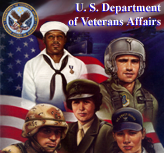(Washington, DC) Demonstrations at 124 VA cemeteries and at Arlington National Cemetery will now be more restricted and families of fallen American soldiers, sailors, airmen and Marines will soon have greater protections under federal law – thanks to legislation improved by an amendment crafted by U.S. Senator Larry Craig, and adopted today by the U.S. Senate.
Senator Craig worked closely with Senator Jim Inhofe (R-OK) and Majority Leader Bill Frist (R-TN), both cosponsors of the amendment, to secure its passage.
"For the past few years, small bands of protestors have gathered at the funerals of fallen military heroes. The conduct of those protestors has been as outrageous as it has been unwelcomed. While this fringe group has yet to appear at Federal cemeteries, we must be proactive to guard these shrines from their attempts to shock and offend what is a captive, grieving audience," said Craig, Chairman of the U.S. Senate Committee on Veterans’ Affairs.
The new bill (H.R. 5037) will not stop the protests, but it will restrict under federal law how far away protestors can gather from cemetery access points.
"As we crafted this amendment in the Senate, and later with the concurrence of my House colleagues, we tried to strike a balance between the first amendment rights of Americans to express ideas – even ideas we find quite repugnant -- with the important need to have respect for the fallen and their families. I am pleased that the new bill reflects the changes we sought," Craig said.
An earlier version of the legislation passed by the U.S. House of Representatives had greater restrictions than those passed by the Senate. But the Craig-passed amendment was an accepted compromise between negotiators from the two bodies of Congress that addressed several concerns.
"Many of VA’s cemeteries are tucked in the middle of residential neighborhoods. I am always sensitive to expanding the Federal Government’s sphere of influence and regulation, especially to cover property that is not its own, unless there is absolutely no other alternative. I believe we’ve found that alternative by appropriately narrowing the reach of the criminal prohibitions in the bill to the areas around cemeteries most likely to serve as the forum for disruptions – access points," Craig said.
Under the restrictions adopted by the Senate, a protestor making any "noise or diversion that disturbs or tends to disturb the peace or good order of a funeral, memorial service, or ceremony" may not do so within 150 feet of any point of access to or exit from cemetery property. The amended Senate bill also prohibits any demonstration that is within 300 feet of cemetery property that would impede access to or exit from the property.
The bill retained other provisions in the original House-passed legislation that defined prohibited demonstrations; prohibited demonstrations on the grounds of Federal cemeteries; levied a fine, up to a year in prison, or both, for violators of the prohibitions; and expressed the Sense of the Congress that states enact appropriate restrictions at military funerals.
"The principles behind the amendment are simple: The closer a funeral procession is to the gates of a Federal cemetery, the tighter the restrictions on demonstrations should necessarily be to ensure a dignified, solemn, and respectful burial at our national shrines," Craig said.
The bill now goes to the President for his signature.
#####







